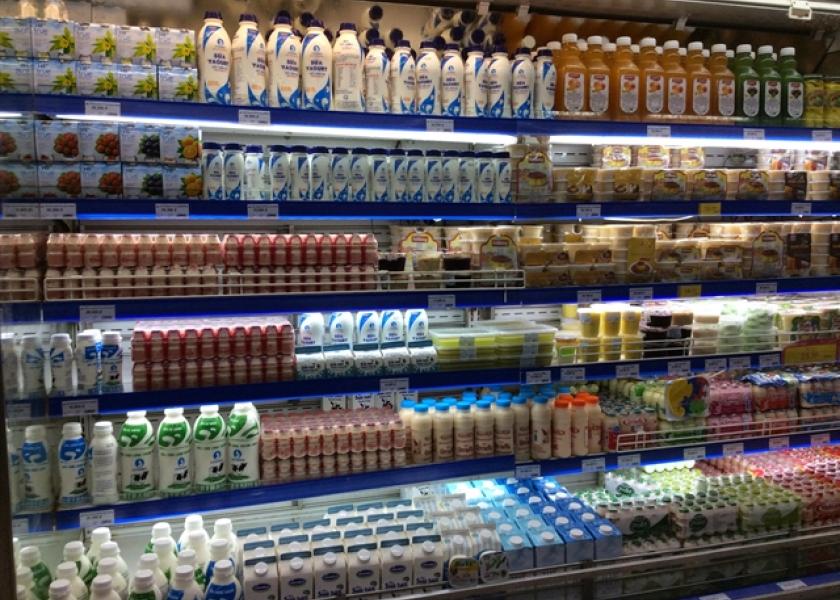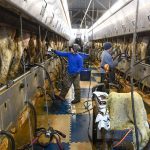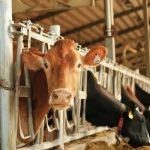
Dairy producers have had some legitimate reasons to be glum about the state of the dairy industry. But that’s not the case for nearly half of the producers who participated in the recent 2024 State of the Dairy Industry survey, sponsored by Farm Journal.
Forty-three percent of the 210 respondents – producers whose cowherds range from 100 to 20,000 head – report they are “very optimistic” about the future of dairy.
Just as encouraging, the survey indicated nearly 70% of respondents had profits in the past five years, according to Karen Bohnert, editor and editorial director for Dairy Herd Management.
“And more than half of them plan to grow in the next five years, which is exciting news for the industry,” says Bohnert, who managed the survey process and reported on the results.
In a recent follow-up webinar, Bohnert asked three dairy industry leaders to share their perspectives on what they see as some of the best opportunities that lie ahead for the industry.
Here are four takeaways from their discussion:
1. While volatility will continue, the industry will see increased opportunity for profits, with export markets being key.
“I’m very bullish on dairy. We are a growth segment – a growth segment,” emphasizes Michael Dykes, president and CEO of the International Dairy Foods Association.
He points to several bright spots in the industry that have been underway for the past couple of years as proof.
“We’ve had record consumption of dairy products during that time,” he says. “Cheese is driving the bus clearly. Yogurt and ice cream are also doing well, though fluid milk (consumption) has been declining.”
Internationally, Dykes says the U.S. dairy industry has to stay focused on export markets as they are key to profitability.
“Forty percent of the increased milk production in the last 20 years has gone to the export markets, primarily in the form of powders and cheese,” he says. “So, trade is extremely important to us, and we’ve got to make sure we’re focused on that.”
Stephen Cain, with the National Milk Producers Federation, says he is bullish on export opportunities for the dairy industry in the long-term.
“We’ve had a little bit of a speed bump here in the last couple years with some issues with China, but in general the trend line is growth for our dairy products,” says Cain, senior director of economic research and analysis for the Federation.
“As we move forward the next five to 10 years, I think some of our competitors – the European Union and New Zealand – will be hard pressed to see significant milk growth. I think that opens up a tremendous opportunity for U.S. dairy producers to really fill the gap and fill demand globally,” Cain adds.
Erica Maedke, vice president at Ever.Ag Market Insights, says while the milk price is closer to class for 2024, next year she anticipates seeing a change with a lot of growth in capacity possible.
“It’s really the fundamentals of supply and demand,” she says. “Dairy producers do a great job of making milk, and we are finally moving into a period where we most likely will have more capacity than we really know how to handle. So, I think at least in the short run to the medium term, we are going to see more buyers looking for milk supplies.”
While Maedke believes there will be opportunity in exports, she does caution that she anticipates continued volatility and encourages producers to keep that in mind.
“We go through these waves. We’re going to be in and out of this market, and back and forth. But hopefully we’re seeing the floor lift when we see all this additional capacity,” she says.
2. The nutrition, health and wellness space will open more doors of opportunity for the dairy industry to enter.
“The general public wants to live longer, healthier lives, and I think that will provide tremendous possibilities for us with dairy protein,” Dykes says.
He believes that fractioning milk to better access its casein, whey protein and other properties will help the industry develop a variety of new products as well as improve existing ones.
“I am a firm believer that there’s more value in the fractions than what we have capitalized on so far,” Dykes says. “I also believe there are more beneficial fractions in a gallon of milk than we even know about. But we will identify those and find a way to monetize them, and we’ll find a way to contribute to a healthy lifestyle.”
3. As companies invest in developing more dairy products, that will increase the demand for access to more milk.
“In New York, there are five new dairy plants (in varying degrees of development),” Maedke says. “I think that will lift the northeast region of the U.S., as you consider ‘a high tide raises all ships.’ That will have spillover impacts to benefit folks in Vermont and Pennsylvania, as well.”
She also cites dairy product manufacturing expansions in Lubbock, Texas, and Dodge City, Kansas, as “huge positives” for the dairy industry.
While some of manufacturers’ needs for milk will be met by existing local supplies, that won’t be the case everywhere, she adds.
“Unfortunately, there will also likely be regionalization of some plants, some plants will close or move locations, looking for a better milk supply,” she says. “The Southwest is one region that’s just going to be tight on milk. But from a dairy producer’s perspective, there is hope for increased premiums as we look ahead for the next year or two.”
4. Dairy farmers are a resilient group and will respond to market opportunities and grow.
Dykes notes that some members of the dairy industry are concerned about any increases in market demand, because of the price and limited availability of heifers.
“If there’s a market demand for the milk, dairy operators will find a way to start producing more heifers; using sexed semen will be one way. The producers all work with rations, and they’ll figure out how to increase the milk production per cow,” he says. “I’m a believer that dairy farmers respond to the market signals. I’m a firm believer that dairy farmers will find a way to produce the milk that the market is calling for.”
Additional insights from the industry experts are available in the complete webinar program available here.
You can now read the most important #news on #eDairyNews #Whatsapp channels!!!
🇺🇸 eDairy News INGLÊS: https://whatsapp.com/channel/0029VaKsjzGDTkJyIN6hcP1K
























